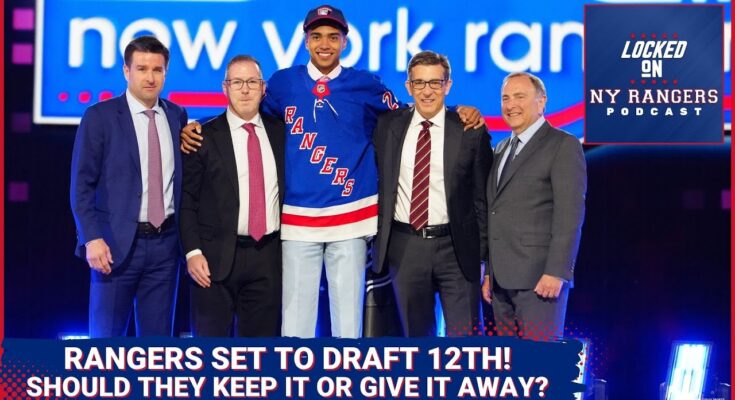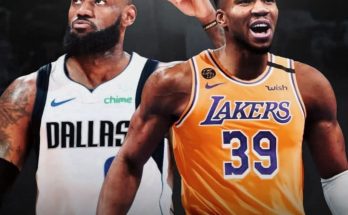New York Rangers Mock Draft: Brady Martin on the Radar at No. 12 — Will There Be Hidden Gems?
The New York Rangers enter this year’s NHL Draft with a sense of urgency and opportunity. Following a season where expectations were high but ultimately unmet, the front office knows that roster improvement needs to be immediate, but also sustainable. With the 12th overall pick in hand, the Rangers have a critical chance to infuse their organization with a prospect who not only fits their system but also has the upside to be a key piece in the team’s future. All indications suggest that the front office has zeroed in on forward Brady Martin as their top target if he’s still available when they go on the clock. While nothing is guaranteed in a draft, especially one as unpredictable as this year’s class, Martin’s blend of tools, maturity, and ceiling makes him an extremely appealing selection.
Brady Martin’s draft stock has been on the rise, particularly following a season that saw him showcase his scoring ability, positional versatility, and leadership qualities. His ability to control play in the offensive zone, along with his tenacious forechecking and vision, puts him in a tier of players that NHL teams view as capable of playing sooner rather than later. For the Rangers, who are contending in the present but keenly aware of the need for depth and flexibility down the road, Martin represents an ideal balance. He’s not simply a scorer; he brings a conscientious, two-way approach that fits with head coach Peter Laviolette’s system, which emphasizes accountability and structure without sacrificing speed or creativity.
What makes Martin even more attractive is the fact that he doesn’t need to be rushed. The Rangers can afford to let him develop in juniors or the AHL, knowing that their top six is currently occupied by veterans who can carry the offensive burden in the short term. However, Martin’s style of play lends itself well to a bottom-six role should he push for NHL time earlier than expected. That kind of flexibility—being able to contribute in multiple ways and adjust to different roles—is often the hallmark of successful NHL players, particularly those taken in the mid-to-late first round. He would not be asked to be a franchise savior but could quietly and effectively grow into a mainstay of the Rangers’ lineup.
Beyond the first round, the real challenge for any team is identifying value in the later rounds. The Rangers have a decent arsenal of picks and have shown in recent years that they can find talent outside of the spotlight. Players like Braden Schneider, K’Andre Miller, and even Igor Shesterkin—who was selected in the fourth round back in 2014—are evidence of the front office’s ability to unearth impactful players without always having a top-tier pick. That kind of savvy will be essential this year, especially with a draft class that has been described as deep in certain areas but lacking in consensus beyond the first few selections.
There is a lot of speculation that the Rangers could look to draft a defenseman or goaltender in the middle rounds. With Shesterkin solidified as the current starter, the organization still lacks a clear-cut goaltending prospect to develop as his long-term backup or successor. While goaltending prospects are notoriously difficult to project, finding a high-upside player who can be molded over several seasons is never a bad investment. The same goes for the blue line. While the Rangers boast some strong defensive prospects, depth is always critical—especially given how injuries and trades can test a team’s pipeline at any time.
Some names to watch in the later rounds include under-the-radar European forwards and North American players who may have been overshadowed by bigger names during the scouting season. These are the kinds of players who may not dominate headlines but possess raw tools that can be refined within a professional development system. For a team like the Rangers, who have emphasized the importance of character and adaptability, finding players who are coachable and hungry is just as important as grabbing those with high-end skill.
An interesting wrinkle in the Rangers’ draft approach is how it could potentially tie into future trade scenarios. If they decide to package some of their later picks to move up in the draft or acquire a prospect from another team’s system, it wouldn’t be a surprise. General Manager Chris Drury has shown a willingness to be aggressive when needed, and if the front office feels there’s a player slipping into the late first or early second round that they truly believe in, they might pull the trigger. That’s especially likely if Martin is taken before they pick at No. 12. In that case, don’t rule out a quick pivot toward a defenseman like Carter Yakemchuk or a forward with a different style but similar upside. The Rangers want impact players, and this draft could be the perfect time to take a calculated risk.
Scouting philosophy will also play a major role in how the Rangers operate. Their scouts have been seen at multiple international tournaments, and there’s reason to believe they might place greater emphasis on players who’ve proven themselves on the international stage. These prospects often arrive with a deeper understanding of systems play and are accustomed to playing against elite-level talent. That kind of experience can’t be discounted, especially for a franchise that aims to be competing deep into the playoffs on a consistent basis. The Rangers want players who don’t shrink in big moments—and the draft is a great time to find those with the temperament to handle the bright lights of Madison Square Garden.
The pressure is undoubtedly on the Rangers’ front office this year. After falling short in the playoffs again and with an aging core led by veterans like Chris Kreider and Mika Zibanejad, it’s clear that the next generation of talent must begin to emerge. The Rangers are not in a full rebuild by any means, but they are entering a phase where strategic drafting and development will dictate whether they remain in the contender conversation over the next five years. That makes every draft pick, every scouting report, and every decision in the war room vitally important.
Fans should be excited about the possibilities. A player like Brady Martin, if drafted, could quickly become a fan favorite with his combination of hustle, talent, and willingness to play a 200-foot game. The prospect of adding another dynamic forward to a group that already includes talents like Alexis Lafrenière, Filip Chytil, and Will Cuylle is enough to generate real optimism. Add in the potential for a late-round steal or two, and this draft could be the one that strengthens the Rangers not just for next season, but for the next decade.
Ultimately, this draft represents more than just another date on the calendar. It’s a pivotal opportunity for the Rangers to reaffirm their identity—one built on strong foundational players, homegrown talent, and a relentless drive to contend. Whether they end up with Brady Martin or pivot in another direction, success in this draft will hinge not just on who they pick, but how those players develop in the seasons to come. The Rangers’ front office has the tools, the resources, and the urgency to get it right. Now, it’s just a matter of execution.



